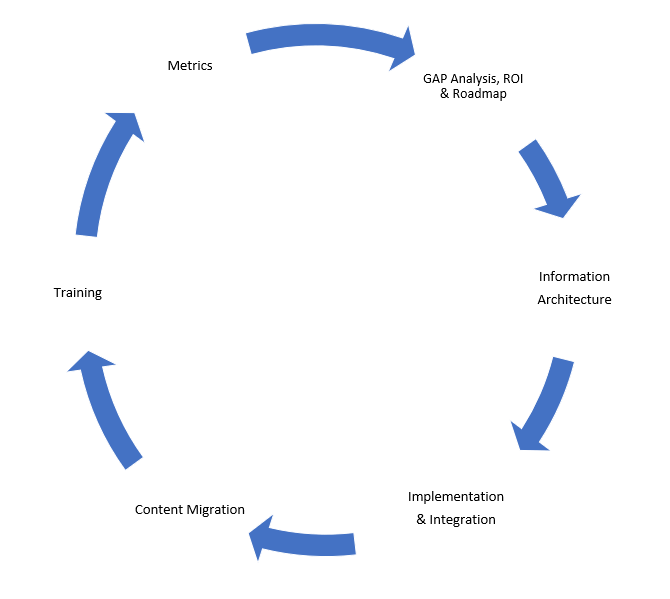The Emergence of the Common Information Experience
For years, marketing, sales, tech pubs, and customer support operated independently throughout the customer journey. Customers were supplied with very different information in the stages preceding the buying decision. Over the past few decades, however, companies have shifted to a common information experience to align with their focus, increasing revenue.
This new approach adds continuity and consistency to the information experience by implementing the use of common terminologies, legal wording, and compliance measures throughout the information experience. Technical writers are now involved both in the pre-purchase phase, and in the customer phase (once customers buy the product and want to figure out how to use it) because they provide valuable input to other departments.
Learn how your company can benefit from using structured content, and tips on choosing the right technology to implement it in our blog.
How can structured content answer your business needs?
The common information experience gives a fresh perspective on technical writers and their ability to drive cost savings, revenue generation, and customer satisfaction— all three critical to upper management.
Structured content brings many benefits that can address the business needs upper management find important. Here’s how:
Decreasing Costs
Structured content improves process efficiency by supporting content reuse. Content is created once and can be used in multiple places. DITA is probably the most recognized standard when it comes to content reuse. Automation is in addition enhanced with single-source publishing, which allows users to publish the same content in multiple output formats such as PDF or HTML without manual formatting.
Collaboration to verify content accuracy is made easier across team members, particularly content developers and subject matter experts (SMEs). Information is delivered in “chunks,” which enables SMEs to focus only on the information in question instead of an entire document. This helps reduce translation costs, as one can focus exclusively on the content that has changed and needs updating.
Increasing Revenue
Companies are starting to understand that having informed prospects and happy customers is essential to increasing revenue. A company that provides the necessary technical information to decide whether a product or service meets customers’ needs, and how to operate and configure it is working towards this goal. More reasons to monitor the content these groups access, and to make it easily findable regardless of the device they are using.
With this information, companies can analyze the perceived value of published content. They can subsequently take action to refine it and use tools such as faceted search to facilitate their access. These efforts, along with the fact that structured content is automatically responsive to mobile devices, are factors affecting customer satisfaction.
Measuring the Impact of Structured Content
How to Select the Right Structured Content Model
Research has shown that most customers consult technical product information to learn more about a product before buying it (2017 survey conducted by Lightspeed). For this reason, companies should ensure technical information is concise and qualitative.
In order to select the structured content model to match its needs, it is important for a company to understand its business needs first. This involves defining requirements across the company, with the support of IT, and choosing a data model (and potentially nuances for a specific situation). Hiring a consultant to estimate implied costs is valuable in this procedure.
Developing an Actionable Plan
Having a plan of action can, to some extent, help predict the impact of the technology, track its success, and decide whether adjustments are needed. The business should first determine the chances of success of the selected model and run tests during pilot phase before moving to production.
- Proof of concept – can it work?
- Pilot – will it work?
- Production – does it work?
Overview
Metrics are a good way to make a first assessment of a company’s situation. After, it can move on to an actual analysis. The company can then build a strategy of information architecture followed by implementation and integration, content migration, and training. A cycle to be reiterated as needed.

Moving to structured content certainly implies a financial investment and significant team efforts across any company. However, ignoring or refusing to address the increasing demand for clear and accessible technical communication might be at a greater cost. Besides, benefits such as customer satisfaction and increased revenue that come with structured content might convince many businesses to consider implementing it.
This blog was originally presented as an IXIAtalks webinar by Don Bridges and Sydney Jones. You can find the webinar here.
Learn more about our IXIAtalks webinar series.






